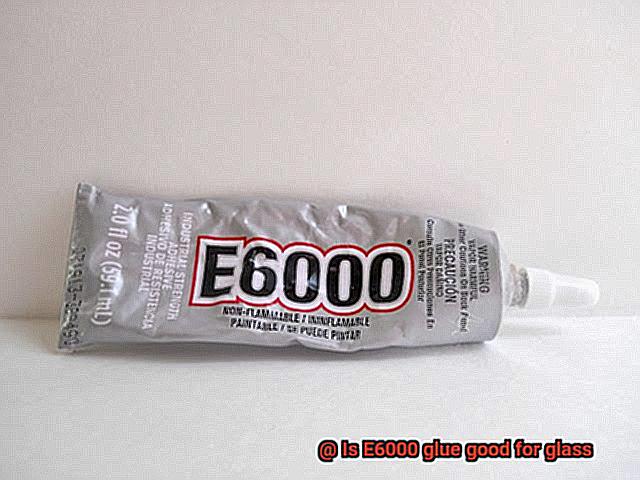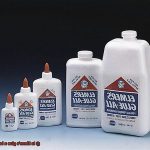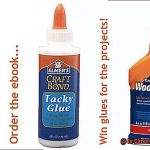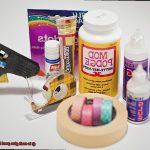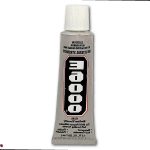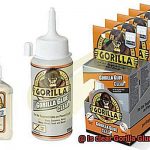Glass, oh how it enchants us with its delicate allure and endless creative possibilities. From intricate stained glass windows to awe-inspiring blown sculptures, this ancient material has held artists in its mesmerizing grip for centuries. But when it comes to bonding glass pieces together, finding the perfect adhesive can be a puzzling quest. Enter E6000 glue – a name whispered among craftsmen and DIY enthusiasts like a secret code.
But does this seemingly magical adhesive truly live up to its reputation? Can it conquer the challenges of adhering glass with strength and reliability? With skepticism filling the air, we embark on a journey to uncover the truth behind E6000 glue’s effectiveness on glass surfaces.
E6000 glue has earned its stripes as a go-to adhesive for various materials, thanks to its remarkable versatility. It effortlessly bonds metal, wood, fabric, and even plastics, earning itself a permanent spot in countless workshops. But glass presents an entirely different ballgame with its smooth and often non-porous surface.
In this article, we will dive deep into the specific qualities that make E6000 glue a potential game-changer for any glass project. We’ll explore its exceptional bonding strength that holds glass pieces together like they were meant to be one. We’ll marvel at its flexibility that allows for movement without compromising adhesion. And we’ll raise our eyebrows at its resistance to water, heat, and cold – ensuring your glass masterpiece remains intact through any weather storm.
But that’s not all. We’ll also learn about the easy application process that even beginners can master with confidence. And fear not, for E6000 glue leaves no trace behind with its transparent finish that lets the beauty of your glass shine through unimpeded.
So whether you’re dreaming of creating a stunning stained glass masterpiece or simply need to mend a shattered vase, join us on this exhilarating journey as we unlock the secrets behind E6000 glue’s potential supremacy in the captivating world of glass.
Advantages of Using E6000 Glue on Glass
Contents
- 1 Advantages of Using E6000 Glue on Glass
- 2 How to Apply E6000 Glue on Glass
- 3 Tips for Safe and Effective Use of E6000 Glue
- 4 Types of Projects Suitable for E6000 Glue
- 5 Drying Time and Curing Process of E6000 Glue
- 6 Resistance to Water, Chemicals, and Extreme Temperatures
- 7 Is E6000 Glue Safe for Use on Glass?
- 8 Potential Disadvantages of Using E6000 Glue on Glass
- 9 Conclusion
When it comes to working with glass, finding the perfect adhesive is essential for creating strong and long-lasting bonds. Among the vast array of options available, E6000 glue emerges as a favorite choice for artists, crafters, and DIY enthusiasts. Its exceptional bonding capabilities, versatility across materials, and other unique advantages make it the ideal adhesive for glass-related projects. In this article, we will delve into the advantages of using E6000 glue on glass and discover why it is the go-to solution for professionals and hobbyists alike.
Advantage 1: Unbreakable Bonds
E6000 glue takes pride in its ability to create a bond that is both strong and durable on glass surfaces. Whether you’re crafting intricate glass jewelry or repairing a cherished glass item, this adhesive can be trusted to securely hold the pieces together. It resists impacts and vibrations, ensuring that your projects remain intact even amidst daily use.
Advantage 2: A World of Possibilities
The versatility of E6000 glue knows no bounds. While it excels in bonding glass, it also proves highly effective on an array of other materials such as metal, wood, fabric, and plastic. This adaptability makes it the adhesive of choice for artists and DIY enthusiasts who constantly explore different materials in their projects. With E6000 glue by your side, you can seamlessly combine glass with other materials to bring forth stunning and one-of-a-kind creations.
Advantage 3: Crystal Clear Brilliance
When working with glass, aesthetics are paramount. E6000 glue dries clear and transparent, allowing the inherent beauty of the glass to shine through without any distractions. Unlike some glues that may leave visible residue or marks on the glass surface, E6000 provides a seamless and invisible bond. This feature proves invaluable when working on delicate glass items like jewelry or decorative glassware.
Advantage 4: Embracing Flexibility
Glass, known for its tendency to expand or contract with temperature changes or external forces, demands an adhesive that can withstand its movements. E6000 glue remains flexible even after curing, enabling it to accommodate slight shifts without compromising the bond. This flexibility ensures that your glued glass items can endure everyday use without any worries of cracking or breakage.
How to Apply E6000 Glue on Glass
Glass is a versatile material that adds elegance and beauty to various craft and DIY projects. However, the key to a successful glass project lies in creating a strong and durable bond. Enter E6000 glue, a trusted adhesive known for its reliability and versatility. In this comprehensive guide, we will take you through the step-by-step process of applying E6000 glue on glass, ensuring an invisible and long-lasting bond.
Step 1: Prepare the Surface – A Clean Canvas
Before diving into glue application, it is crucial to prepare the glass surface properly. Begin by meticulously cleaning the glass with a mild soap or specialized glass cleaner. This step removes any trace of dirt, oils, or debris that could hinder the bond. Take a soft cloth and gently wipe away any impurities, ensuring the glass is completely dry before proceeding.
Step 2: Enhance the Bond – A Rough Touch
To ensure an incredibly strong bond, it is recommended to create a textured surface on the glass. Carefully sand the area where you plan to apply the glue, using fine-grit sandpaper. This gentle abrasion increases the surface area for the glue to adhere to, ultimately improving the strength of the bond.
Step 3: Apply the Glue – Precision and Control
Step 4: Join and Press – The Art of Connection
With precision and a steady hand, align the two glass surfaces meticulously. Gently press them together, applying light pressure for a few minutes. This step ensures proper adhesion and a solid bond. If desired, clamps or tape can be utilized to hold the pieces in place until the glue sets.
Step 5: Allow for Curing – Patience for Perfection
E6000 glue boasts an extended curing time compared to other adhesives. Be patient and give it the time it needs to work its magic. Allow the glued pieces to dry undisturbed for at least 24 hours in a well-ventilated area. During this crucial period, refrain from handling or putting stress on the bonded items. By exercising patience, you guarantee a bond of maximum strength and durability.
Tips for Safe and Effective Use of E6000 Glue
When using this adhesive on glass, it is essential to follow certain tips and precautions to ensure both safety and effectiveness. In this article, we will delve into five expert tips for using E6000 glue on glass projects that will help you achieve professional results.
Thoroughly Clean the Surface:
Before applying E6000 glue to glass, take the time to clean the surface meticulously. Dust, dirt, and oils can interfere with the adhesive’s ability to bond effectively. Give the glass a thorough wipe-down using rubbing alcohol or a specialized glass cleaner, ensuring that it is completely free from any residues. This step will pave the way for a strong and durable bond.
Prioritize Personal Protection:
E6000 glue contains chemicals that may irritate the skin, making it crucial to prioritize personal protection. Wear protective gloves while working with the adhesive to prevent direct contact with your skin. Additionally, ensure that you work in a well-ventilated area or use fans to help dissipate the strong fumes emitted by the glue.
Apply a Thin, Even Layer:
To achieve optimal results with E6000 glue on glass, apply a thin and even layer of adhesive to the surfaces that need to be bonded. Avoid excessive amounts of glue, as this can lead to visible residue or unsightly seepage from the bonded area. Utilize a small brush or nozzle for precise application, ensuring an even distribution and helping you achieve seamless results.
Allow Ample Drying Time:
When working with E6000 glue on glass, patience is key. The drying time can vary depending on factors such as temperature and humidity levels. To ensure a strong and durable bond, refer to the manufacturer’s instructions for specific drying times. During the curing process, refrain from moving or disturbing the glued objects to allow the adhesive to set correctly and create a lasting bond.
Store Properly for Longevity:
To maintain E6000 glue’s effectiveness over time, proper storage is essential. Make sure to tightly seal the cap after each use and store the adhesive in a cool and dry place, away from direct sunlight and extreme temperatures. By doing so, you will prolong the adhesive’s shelf life and ensure its efficacy for future projects.
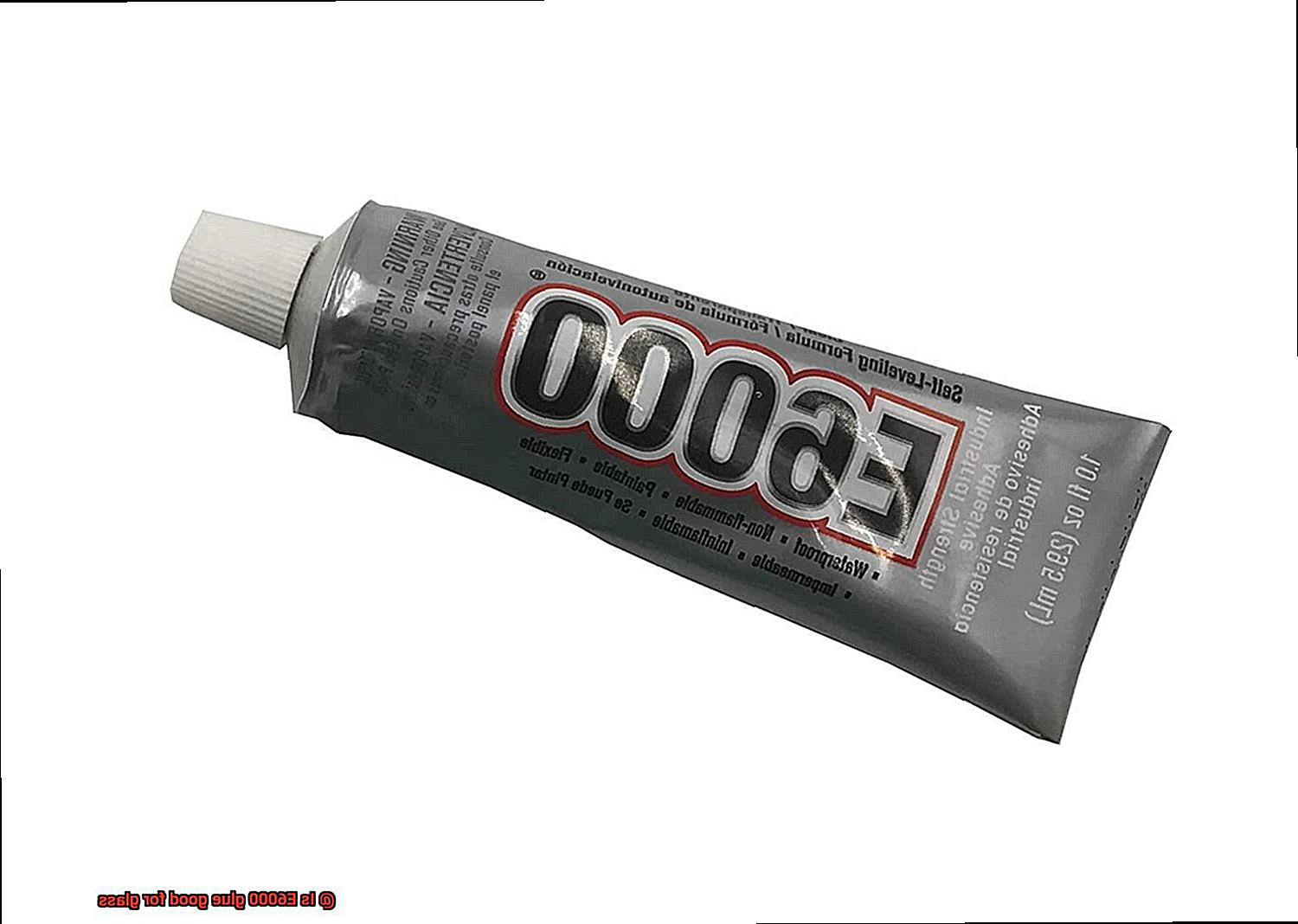
Types of Projects Suitable for E6000 Glue
Today, we embark on a magnificent journey into the mesmerizing realm of E6000 glue and its extraordinary prowess in glass projects. Whether you’re fixing shattered glass treasures or fashioning awe-inspiring artistic wonders, this versatile adhesive is your ultimate ally. Let’s delve into the diverse range of projects that perfectly suit E6000 glue when working with glass.
Jewelry Making: A Symphony of Sparkles
Picture yourself crafting exquisite glass jewelry that captures hearts with its brilliance. E6000 glue proves to be a match made in heaven as it securely fastens rhinestones, beads, and other embellishments to glass pendants, earrings, and bracelets. With its steadfast grip, your creations will endure the tests of time and style.
Glass Mosaic Art: A Kaleidoscope of Creativity
Unleash your boundless imagination through the captivating world of glass mosaic art. E6000 glue becomes your artistic accomplice, allowing you to seamlessly adhere small glass tiles or fragments onto surfaces like mirrors or vases. Watch in awe as your visions come alive, intricate designs forming a tapestry of breathtaking beauty.
Stained Glass Projects: Illuminating Elegance
Transport the timeless allure of stained glass into your living spaces with the help of E6000 glue. This adhesive works wonders in bonding different pieces of glass together, enabling you to create both intricate and enduring stained glass artwork. Bask in the ethereal glow as sunlight dances through your vibrant masterpiece.
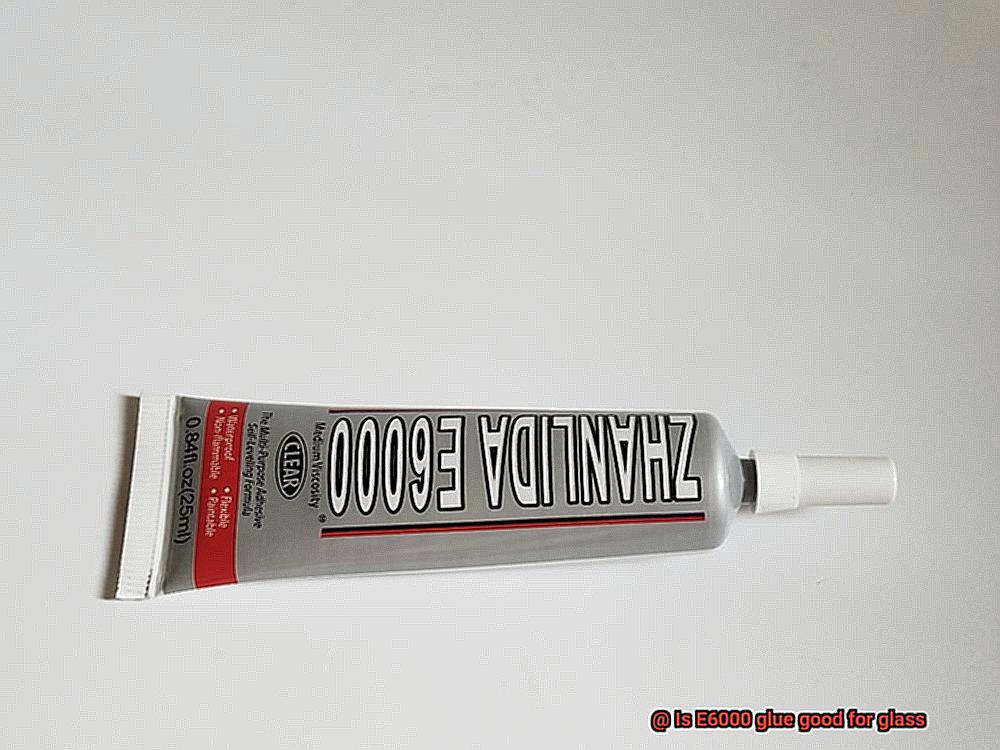
Repairing Glass Items: Mending Memories
In a moment of accidental mishap, E6000 glue emerges as the ultimate savior for broken glass heirlooms. Be it delicate picture frames, precious vases, or cherished glass figurines, this adhesive’s unyielding bond ensures a seamless restoration. Mend your treasures with unwavering confidence and revel in the memories they hold.
DIY Home Decor: Crafting Uniqueness
Transform your abode into a sanctuary of personalized charm with E6000 glue as your trusted companion. Attach fabric, paper, or plastic to glass surfaces to fashion one-of-a-kind decorative pieces that reflect your distinct style. From bespoke glass knobs adorning furniture to resplendent glass tabletops, let your creativity radiate throughout your living space.
Drying Time and Curing Process of E6000 Glue
Patience becomes your ally when working with E6000 glue. The drying time is influenced by various factors, such as temperature, humidity, and the thickness of the glue application. In ideal conditions, E6000 glue will complete its drying process within 24 to 72 hours. However, colder or humid environments can extend this timeframe, reminding us that good things are worth waiting for.
To ensure a bond that can withstand the test of time, it is vital to give your project sufficient drying time before handling or applying pressure. Rushing this crucial step risks compromising the bond or even causing the glue to detach completely. So sit back, relax, and let your creation breathe as it dries to perfection.
Now, let’s unravel the mysteries of the curing process. Although E6000 glue may appear dry after the recommended drying time, it may still be undergoing a transformative journey called curing. During this phase, the adhesive evolves from a liquid state to a solid one, forging a bond that is unyielding.
Complete curing of E6000 glue can take up to 7 days or even longer, depending on environmental conditions. This period allows the glue to strengthen and harden, creating an unbreakable connection between your glass pieces. Witnessing this metamorphosis is like watching art come alive before your eyes.
If you’re yearning for faster results, gentle heat can be your ally. Applying heat to the glued area accelerates the curing time, but caution must be exercised to prevent overheating or damaging the delicate glass. We want your project to shine without any unintended consequences.
Once E6000 glue has fully cured, it forms a resilient and flexible bond with glass, making it a versatile choice for various applications. Whether you’re crafting exquisite jewelry, embarking on ambitious glass art projects, or simply restoring cherished glass heirlooms, E6000 glue rises to the occasion.
Resistance to Water, Chemicals, and Extreme Temperatures
Prepare to be amazed as we delve into the extraordinary world of E6000 glue and discover its awe-inspiring ability to defy water, chemicals, and extreme temperatures. Get ready to revolutionize your glass projects with this remarkable adhesive that guarantees unmatched durability.
Picture this: a breathtaking glass mosaic adorning your garden, its vibrant colors staying vibrant even under a torrential downpour. With E6000 glue, this dream becomes a reality. Specially engineered to resist water, this adhesive forms an unbreakable bond that can withstand even the wettest environments. Repair a cracked glass vase or create stunning outdoor decorations – E6000 glue ensures your creations remain unscathed by water’s relentless assault.
Challenging Chemicals:
Accidents happen, but they don’t have to spell disaster for your delicate glass art. Say hello to E6000 glue – your ultimate defense against chemical mishaps. Boasting exceptional chemical resistance, this adhesive fearlessly confronts cleaning agents, oils, and solvents that threaten to destroy your precious masterpieces. Whether you’re working on a stained glass project or delicately repairing a glass figurine, you can trust E6000 glue to keep your bond unyielding against potentially damaging substances.
Defying Extreme Temperatures:
Mother Nature can be fickle, subjecting our beloved glass creations to extreme temperature fluctuations. But fear not – E6000 glue is here to save the day. With an unmatched ability to endure scorching heat or freezing cold, this adhesive remains unwavering in the face of weather’s harshest extremes. From outdoor decorations that brave the elements to magnificent window installations that dazzle in the sun, E6000 glue ensures your glass projects withstand whatever temperature challenges they encounter.
A Word of Caution:
Even superheroes have their limits, and E6000 glue is no exception. While it excels in resisting water, chemicals, and extreme temperatures, prolonged exposure to harsh conditions can eventually weaken its bond. To ensure the longevity of your glass projects, consider implementing additional protective measures such as sealing the edges or avoiding direct exposure to extreme conditions whenever possible. This will help safeguard your creations for years to come.
Is E6000 Glue Safe for Use on Glass?
Brace yourself for the mighty E6000 glue, a versatile adhesive that has captured the hearts of many in the world of crafts and projects. With its promise of unmatched durability, this adhesive superhero claims to conquer all – even glass. But before you embark on your glass project using E6000 glue, let’s delve into the depths of safety concerns and potential risks.

The Glass Dilemma: Conquering Damage and Discoloration
When it comes to bonding any adhesive to glass, damage and discoloration lurk in the shadows like formidable foes. E6000 glue, renowned for its strong bond, may leave behind unsightly residue or marks if not handled with care. To save your glass from harm, it’s vital to perform a small test on an inconspicuous area before applying it to the entire surface. Shield your glass from unwanted scars.
Following the Blueprint for Optimal Results
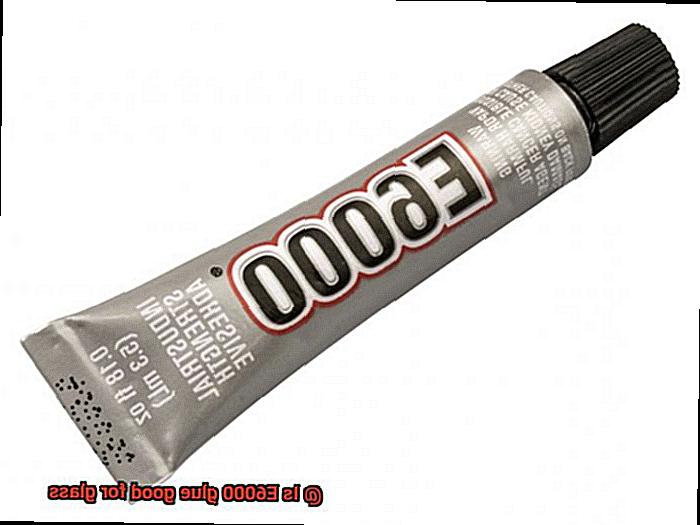
Unlock the secrets to safe and effective application of E6000 glue on glass by following the manufacturer’s instructions. These sacred teachings will guide you through proper application techniques and drying time, ensuring your glass project emerges unscathed and dazzling. A little guidance can make all the difference.
A Tapestry of User Experiences: Mixed Reviews Await
Like a tapestry woven with diverse threads, experiences with E6000 glue on glass span a spectrum of outcomes. While some bask in the glory of successful usage without any issues, others find themselves entangled in problems such as discoloration or struggles with removing the stubborn glue. Navigate this uncertain terrain with caution, for knowledge is power.
Health Risks: Ventilation and Armor for Protection
Within the depths of E6000 glue lie chemicals that may pose health risks if not handled properly. Shield yourself from harm by working in a well-ventilated space or donning a mask, guarding against inhaling any fumes that may arise from this adhesive superhero. Always prioritize your safety – it’s your shield and armor.
Potential Disadvantages of Using E6000 Glue on Glass
Crafters, brace yourselves as we delve into the realm of E6000 glue on glass. This adhesive wonder may have its strengths, but it’s crucial to familiarize yourself with the potential downsides before diving into your glass project. So, let’s cut to the chase and uncover these caveats that lie beneath the shiny surface.
Residue and Haze:
Imagine this – you’ve poured your heart into creating a stunning jewelry piece or an exquisite decorative glass item, only to be greeted by an unsightly residue or haze left behind by the E6000 glue. A nightmare, right? Regrettably, this is a major drawback when using this glue on glass. Even with meticulous cleaning, removing the residue entirely can be a daunting task, leaving your masterpiece tarnished.
Slow Drying and Curing Time:
Patience becomes your best friend when dealing with E6000 glue on glass. This adhesive takes its sweet time to dry and cure, which can be exasperating if you’re working against the clock or itching to handle the glass item before it fully sets. Remember, haste makes waste – don’t let impatience compromise your hard work.
Unpleasant Odor and Health Hazards:
Hold your breath – literally. E6000 glue emits a potent odor that can be quite disagreeable and potentially harmful if used in poorly ventilated spaces. The fumes released during the drying process may trigger headaches, nausea, and respiratory irritation. Prioritize safety by working in a well-ventilated area or donning a mask to minimize exposure to these pesky fumes.
Adhesion Challenges on Smooth Glass Surfaces:
Smooth and non-porous glass surfaces pose a challenge for E6000 glue’s bonding prowess. It may struggle to establish a strong grip, leaving you with a less secure hold. Fear not, though. You can roughen the glass surface or explore alternative adhesives designed specifically for smooth glass surfaces.
5xRNNXQpkOU” >
Conclusion
E6000 glue is indeed a reliable adhesive choice for glass.
Its strong bond ensures that your glass objects will stay securely in place. Whether you’re repairing a broken glass item or creating a beautiful glass art piece, E6000 glue provides the durability and strength needed to withstand everyday use.
This versatile glue can be used on various types of glass, including stained glass, mirrors, and even jewelry.

